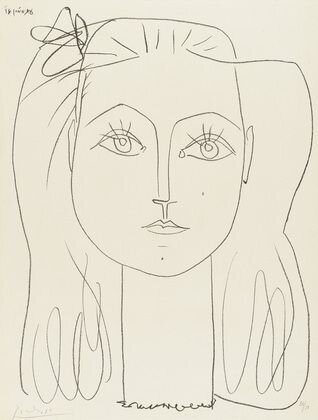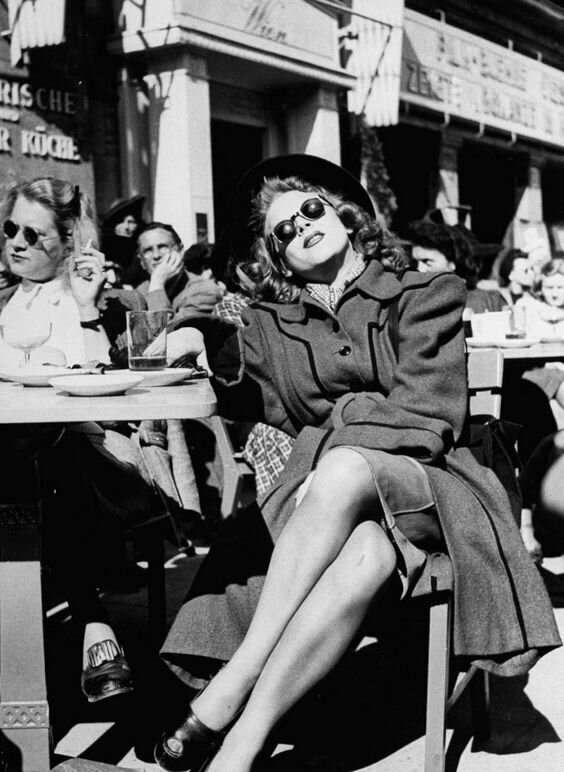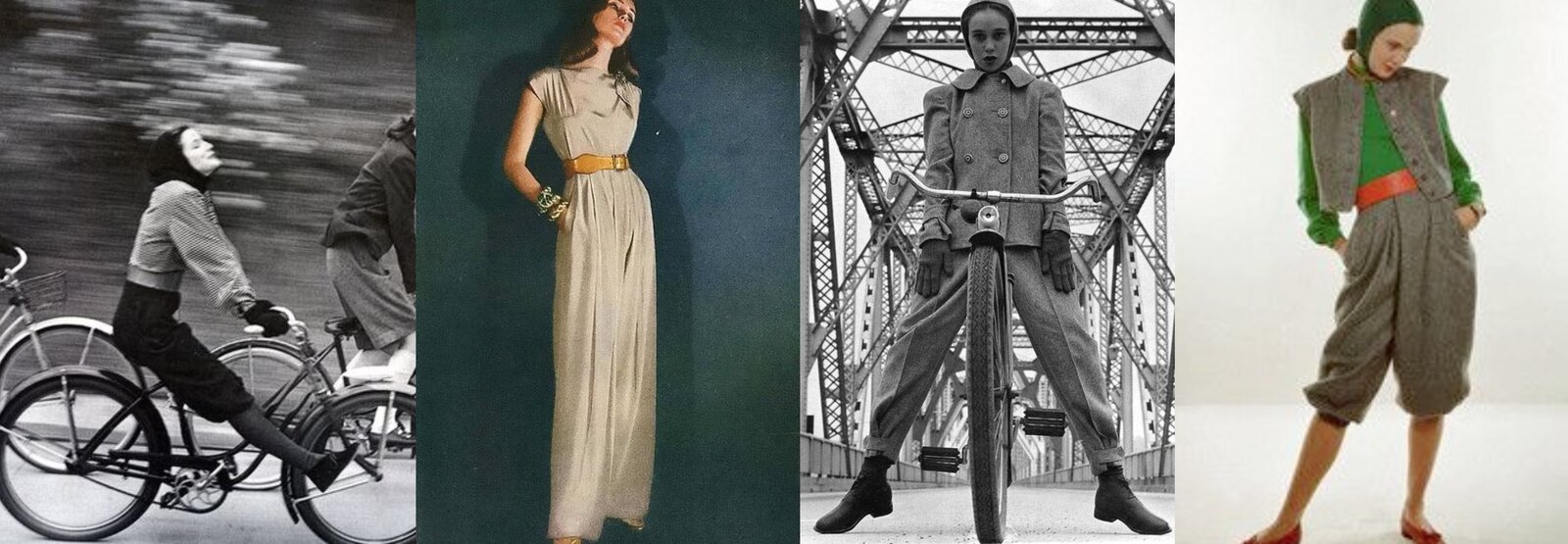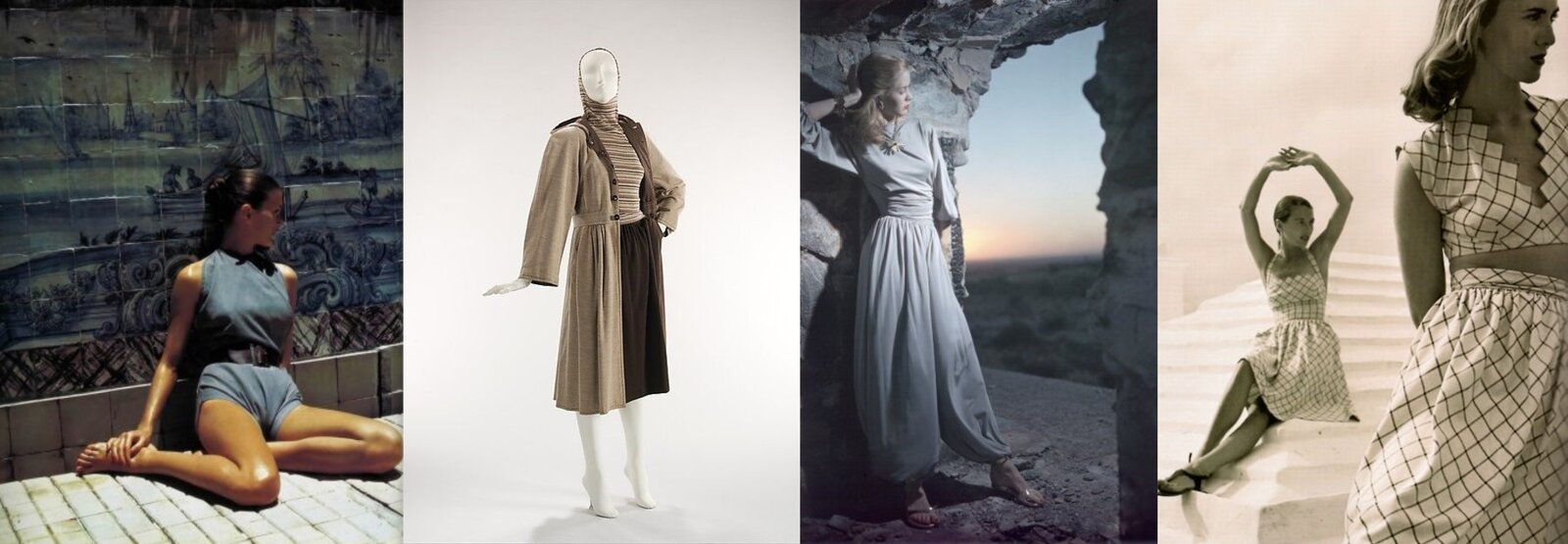In 1946, the deprivations of the war years were not far from anyone’s thoughts and budget. The power that women had gained in the past handful of years could still be felt in strong shoulders and trouser styles. Particularly in the hands of Parisian designers, there were styles presaging The New Look, including prints, colors, length, and extravagance. American designers devoted themselves to fashionable sportswear. Swimwear found fresh new directions.
I love the fashions of 1946. My appreciation doesn’t have so much to do with what was incubating in France. Instead, I am fascinated by the strength and freedom in women’s fashion, whether emanating from France or the U.S. It was the last hurrah of the war years styles, and in the best hands this fashion—on the verge of something very different—was fresh, modern and bold.

Pablo Picasso. Françoise with a Bow in Her Hair (Françoise au Noeud dans les Cheveux). June 14, 1946

Cole of California advertisement, 1946/Glamour, December 1946, photo by Serge Balkin

Even in Berlin, the war was over in 1946. Photo by Walter Sanders.
Women served invaluably during the war, and in this immediately post-war period, clothing reflected their collective strength with tailored, clean, well-accessorized looks for day and work.

March 1946 Vogue cover, photo by John Rawlings/Collarless, grey wool jacket worn with an Amrose beret hat, black gloves and hobo purse, photo by Clifford Coffin/March 1946, Mrs. Stanley Grafton Mortimer, Jr., (aka Babe Paley), wearing a blue and black dress from Traina-Norell, photo by Horst P. Horst/Dorian Leigh, June 1946, photo by John Rawlings
By contrast peasant looks—ruffled, midriff-bearing, and feminine—made a softer impression for casual wear.

May 1946 Charm cover, photo by Jon Abbot/High school girls in Phoenix model frilly skirts and blouses in October 1946/Photo by Constantin Joffe/Swimwear by Jacques Fath and Carven
Shoulders reached an apotheosis, never (not even in the 1980s) to be so large again.

Morry Silver Originals coat/Awning-striped dress, Everfast ad, photo by Plucer/January 1946 advertisement, Adele Simpson outfit/Forstmann ad
At the same time, shoulders were often bared for the classically elegant evening gowns of the year.

Balenciaga/November 15 1946, Barbara “Babe” Cushing Mortimer Paley, dress by Paquin, jewelry by Van Cleef & Arpels, photo by John Rawlings/Charles James dress, Met Museum collection/Carmen dell’Orefice, photo by Erwin Blumenfeld
Victory rolls were a thing of the past, and long hair, whether worn loosely or sleekly piled high, was in vogue. Hats could be either over-the-top flamboyant or neat and rather handsome—a microcosm of the fashion extremes of the year.

October 1946 Elle, Paulette hat/June 1946 Vogue/Howard University student on campus/Madame Paulette, Paris, veiled hat
Shoes ranged from flat and remarkably bare to tall and sleek. Grecian-style lacings were on trend.

June 1946, white high-lacing sandals from Delman and sheer stockings from Artcraft/Footwear, 1946/September 1946 Vogue, Baroness Reutern models her Italian thong sandals/“Make a fashion-point of leg-tan by wearing matched-tan leather sandals and, perversely, cover your arms to the wrist.” May 1, 1946 Vogue, photo by John Rawlings
With all the beachwear shown in 1946 you might think it was an exceptionally warm year, but it wasn’t. Instead, as Le Figaro wrote, “People were craving the simple pleasures of the sea and the sun. For women, wearing a bikini signaled a kind of second liberation. There was really nothing sexual about this. It was instead a celebration of freedom and a return to the joys in life” (quoted by Elizabeth D. Hoover in 60 Years of Bikinis).
The bikini was so named on July 5 of 1946, four days after the Bikini Atoll became the site of the first peacetime nuclear weapons test by the U.S. Louis Réard said he named his version of the revealing suit because it was “small and devastating” …like a nuclear weapon. Playsuits, sundresses and swimsuits stated loud and clear that the war was over, and the joy of going to the beach was back.

Jacques Heim’s version of the bikini, the “Atome”/Playsuit by Bonnie Cashin, Met Museum collection/Hollywood Pattern 1870/February 1946 The Californian
Leisure clearly was a theme in fashion, and central to women’s off-work fun was trouser dressing.

August 1946 Junior Bazaar, photo by Herman Landshoff/January 1946 Vogue, Clare Potter design, Cohama Fabrics ad/August 1946 Junior Bazaar, photo by Herman Landshoff/Model is wearing a grey wool flannel knickers and vest by Winthrop Mills, photo by Serge Balkin
Really, it was a great time to be Claire McCardell. The American designer always came to fashion with women’s comfort, freedom and movement in mind. In 1946 she gave women classic, unfussy gowns, elegantly practical workwear, and brilliant sunsuits and swimwear. Show women of today McCardell’s designs from three-quarters of a century ago and they are likely to be surprised by the year—and wish they could wear the very same clothes now!

Beachwear by Claire McCardell, photo by Louise Dahl-Wolfe/Met Museum collection/Trousers Set by Claire McCardell, photo by Serge Balkin/Summer Dresses by Claire McCardell, photo by Genevieve Naylor
Written by Maggie Wilds/denisebrain